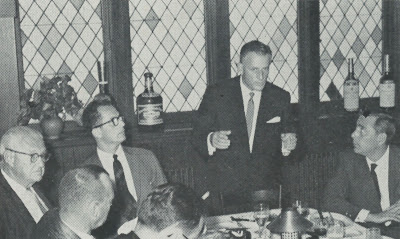Paramount Sells Spooks To The Carriage Trade
Would The Masses Buy Class Chills of The Uninvited?
I'm thinking The Uninvited was Hollywood's first "class" ghost story done seriously (MGM's A Guy Named Joe from 1943 being sort of a warm-up). Notwithstanding Universal monsters from the 30's, I don't know of big studios floating supernatural themes to prestige extent of The Uninvited prior to 1944, and selling them in terms of general audience appeal as opposed to specialized crowd predisposed to thrill topic. Here was where
Paramount wouldn't chicken out with its ghosts being real, but invited healthy skepticism by way of Ray Milland's doubt and humorous asides. At one point, he even jumps under bed covers when a door shuts by itself, a moment that threatens to tip The Uninvited into Cat and Canary farce, thankfully averted as tension mounts later on.
Stardom as a fait accompli was not uncommon then. There was enough confidence in this game and its outcome to go ahead and cast a promising enough face in two of three vehicles before patronage had even a first glimpse, it being possible to impose a newcomer on filmgoers and make them like it. Calibration did have to be set just so, as was case with
There were devices reliable to sell horror movies, most set in concrete.
We have advantage of customized home viewing to create atmosphere for Uninvited viewing. But compare our lights- out and reverent sit with wild and wooly first-runs where The Uninvited was tail end to sky-the-limit vaudeville.
Campaign ideas looked like pillage from Universal's old playbook. Arrange for a brave soul to spend a night alone in your local haunted house (but be sure to get permission from owners!) ... Hold a séance in your lobby ... Have ushers hold open doors for "invisible" patronage ... the list goes on. Showmen had their own gags for spook peddling and most were pretty timeworn, but what worked ten or twenty years before still would for generations coming up who liked being creeped out. Suggested ads from
More at Greenbriar Archives on The Uninvited, and a Glamour Starter look at Gail Russell.












































